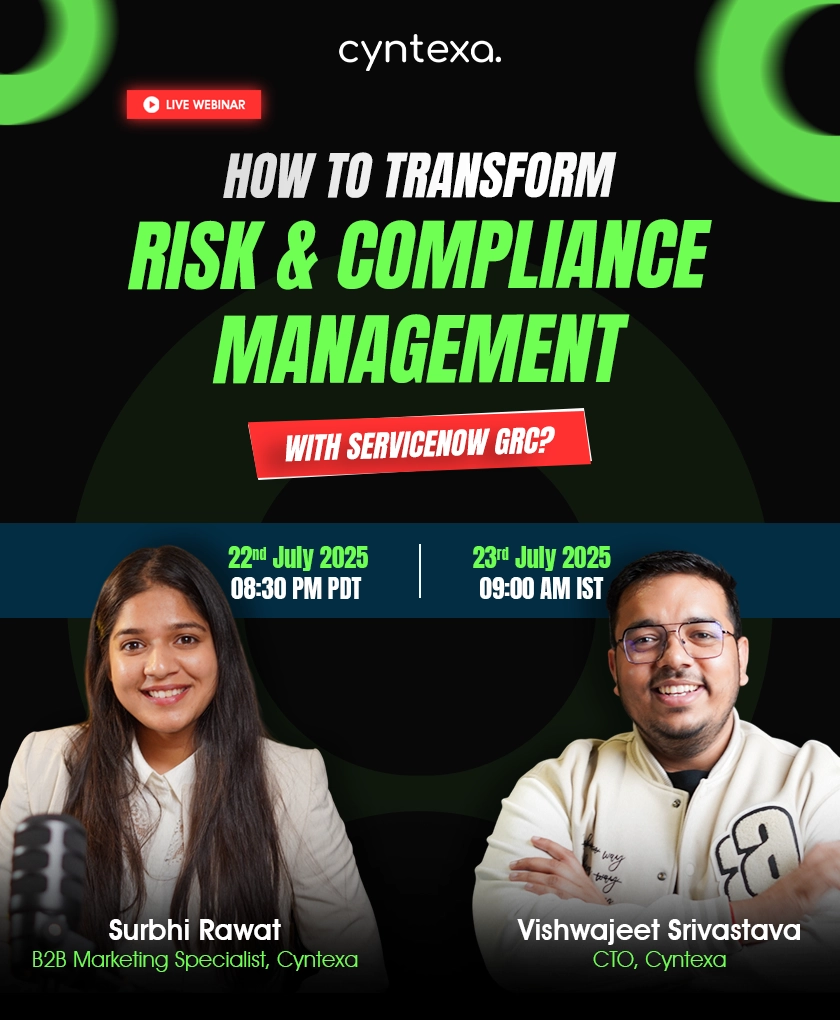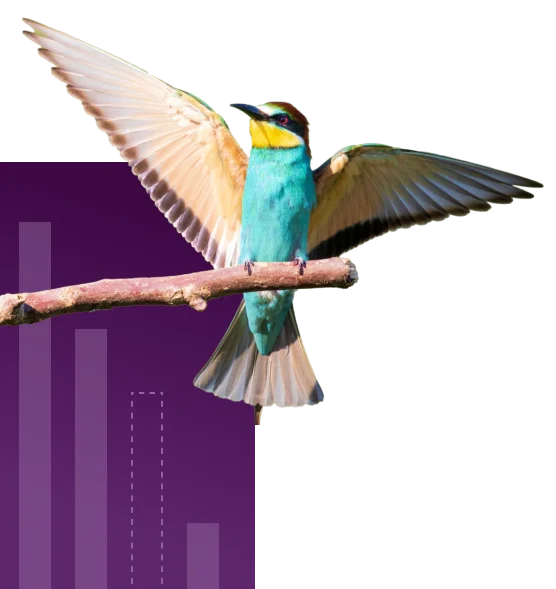Building a Resilient Cloud Security Architecture: Types, Challenges, and Best Practices
Table of Contents
In today’s digital world, where dependencies of businesses on cloud computing can not be substituted, there are plenty of reported cases concerning compliance issues, insider threats, and malware attacks in the Cloud environment.
Also, did you know that as per a Global Financial Stability Report, 2024, the risk of extreme losses for businesses from cyber incidents is increasing, ultimately causing funding problems? Furthermore, cybercrime costs are expected to increase at a staggering rate almost reaching $13.82 trillion by 2028 (Statista).
Is there any end to this? See here getting a reality check is very important, with each attack, the attackers are becoming more sophisticated and informed leaving the Cloud users with huge colossal data losses. But if you as a Cloud user directly can’t stop the attackers the best way out is to focus on having a strong Cloud Security Architecture.
Let’s delve into this term and its implications in a brief yet comprehensive blog. By the end of this, you will have a much clearer understanding of the topic, which will ensure that you never compromise your cloud security.
What is Cloud Security Architecture?
The architecture can be understood as a roadmap or in technical terms as a blueprint for securing data, applications, and infrastructure within a cloud environment. It includes a comprehensive set of policies, technologies, and controls designed to protect sensitive information and maintain business continuity. The architecture is also considered a living document that can be corrected, altered, and modified per the organization’s current and relevant needs.
And if you give it a thought What is Cloud Computing? Then you’ll be able to see things on a bigger scale. Cloud computing involves securely storing and efficiently managing vital data, files, programs, and servers online which is deeply connected to the architecture. This is because the latter provides the necessary security controls and measures to protect cloud-based systems, applications, and data.
Moving ahead now let’s see the importance of the security architecture.
The Importance of Cloud Security Architecture
Though multiple reasons highlight the importance of having a cumbersome cloud architecture, some of the handpicked are mentioned below;
Protects Sensitive Data:
The first and foremost thing that a security architect does is safeguard crucial and sensitive information. One of the most vital aspects of having a robust security architecture is protecting data from unauthorized perpetrators. This is done by having proper access and credential controls.
Heightens Security And Mitigates Risks:
The architecture acts as a roadmap that includes all the analyzed and calculated risks that ensure that Cloud security is heightened. Furthermore, there is the incorporation of secured networks like secured firewalls and VPNs. Plus, as the architecture preparation consists of the principle of risk assessments, the element of risks also gets mitigated.
Significantly Impacts The Downtime Of Business Processes:
Cloud services are frequently affected by disruptions and security threats, resulting in longer downtimes that significantly impact business processes. However, implementing a security architecture can substantially reduce downtime and mitigate these challenges, making it a beneficial solution for Cloud users.
Keeps Maintenance On Point:
All Cloud users must manage and comply with all regulations. This can be easily achieved by creating a security architecture. The architecture not only provides the organization with a structured approach such as a centralized approach or automation one but also helps them strictly enforce all compliance regulations without fail.
Having seen the importance of a security architecture let us look at some of the focal principles or elements that are invariably essential for creating such an architecture.


Some Focal Principles of Cloud Security Architecture
These are some of the key elements and principles that are important for designing a secure security architecture;
Risk Management & Data Security:
While designing a security architecture one of the most essential elements is focusing on adequately managing risks. This is done to mitigate the risks and boost data security. Thus, to ensure the utmost data security Cloud Security Architects must have a contextual access understanding to be aware of who are the users and most importantly what kind of devices they are accessing the data from. They can also tune into some preventive measures such as turning on auditing and monitoring for any kind of data usage and getting data encryption to prevent data loss.
Network Security:
As much as Data security is a non-negotiable aspect of designing a security architecture, Network security also plays a key role. For boosting the network security the architect must select the most suitable Network Topology ( this basically means a systematic arrangement of network connections) apt for the requirements of a particular Cloud user. This will give them a good idea about whether the user access to the network is on-premise or off-premises. Thus, after gaining this knowledge they can closely observe the network traffic and track down the problematic network threats.
Identity And Access Management:
The concept of Identity And Access Management is the next critical element for creating a well-designed architecture. So let’s get deep into understanding the intricate details of Identity And Access Management. The basic fundamental of this access management is that only the authorized and designated people get control of the data. As a Cloud user, one can take the route of Role-Based Access Management Control (This is the model wherein based on the role in an organization people get access to specified information ) and Privilege-Based Access Management.
Operational System Security:
To put it in clearer words the security of operations in the Cloud can be divided into three sub-parts, a unified process, automation, and centralization. Here’s a simple breakdown of the three major parts for securing operations.
- Having a unified process/ centralized process for monitoring and tracking all the security events to avoid glitches.
- Next up is having a secured testing environment for deployment for standardization of the operations.
- Lastly, automation and ai in cloud computing play a key role in handling and managing repetitive tasks. This can largely remove the risks of having human errors in return for securing the operations.
Security Of Application:
Next comes the security of the application and its vitality in designing a security architecture for a Cloud. To ensure application security it is a must to implement a Web Application Firewall (WAF), this acts as a strong barrier between any web application and the internet networks to prevent any sort of attacks. Apart from that the users must also test the vulnerabilities of the web applications at regular intervals and protect API connections using the cloud-based platform’s capabilities.
Zero Trust Model:
Another essential of a robust Cloud Security Architecture is considering opting for the Zero Trust Model. Historically this model has been used by market-ruling Cloud service providers such as Google Cloud. Let us understand what a “Zero Trust Model” is.
As per Forrester Research, this model was first proposed in 2010 by the prominent research analyst John Kindervag. This model works on the principle of always verifying before trusting, this means irrespective of the times any person or any device has entered into an organization’s secured network don’t default trust them. This model can be best implemented by using the MFA and less privileged access controls.
Concept Of Layered Defenses:
Lastly, there comes the concept of layered security defenses. This in simple terms layered defenses means having multiple protective layers of defenses to protect the sensitive data stored on the Cloud.
Taking a Look at the Types of Security Architectures
- Public cloud: In this type of deployment model things usually operate on a subscription-based model. Users in the Cloud have access to a wide array of resources to fully support their needs.
- Private cloud: In a private cloud set up things are a bit different. Where the public cloud is usually operated by multiple people/organizations, in a private cloud the entire cloud infrastructure is owned and managed by one single entity/organization.
- Hybrid cloud: Talking about the Hybrid cloud, this deployment model allows users to use the interconnected capabilities of both the public and private cloud. This is majorly used by organizations that are scaling up rapidly.
- Community cloud: Going by its name, the community cloud supports multiple organizations/members sharing the cloud resources. This can be best described as a cloud that an organization like a University would be using to give access to authorized members of their community.
- Multi-cloud: Safeguarding your data and applications across multiple cloud platforms requires a strategic approach known as multi-cloud security architecture. By consolidating security management and policies, organizations can effectively mitigate risks associated with a diverse cloud environment. The underlying goal of opting for this approach is to automatically reduce the dependency of the users on one single cloud.
Apart from having vivid cloud deployment models, there are also different types of cloud delivery models;
Cloud Security Architecture Delivery models
As we know cloud computing architecture is the foundational blueprint for crafting and delivering cloud-based services and applications. Here are some of the delivery models;
Infrastructure as a Service (IaaS):
Going by its technical definition, the architecture provides virtualized computing resources over the internet. Moreover, this architecture is mostly used for hosting physical servers or virtual machines.
Platform as a Service (PaaS):
The users use this kind of model for the delivery of computing platforms. This is because it provides a convenient development environment in the cloud.
Software as a Service (SaaS):
Lastly, this type of delivery model is a service that ensures that the users don’t have to install and manage the software themselves. This is because all the applications are maintained and hosted from the service provider’s end.
Understanding what is a Shared Responsibility Model?
As the name suggests the shared responsibility model talks about the responsibilities related to cloud security amongst the cloud users and cloud service providers. This phenomenon came into existence because there are certain areas wherein the security architecture requires more attention from the user’s front rather than the service provider, thus, they eventually have to share the load. Some responsibilities are bifurcated mostly based on the delivery model type, i.e. IaaS, PaaS, and SaaS. However, specifically talking about the responsibilities that need to be shared equally amongst the two parties are:
| The Shared Responsibilities | IaaS Model | PaaS Model | SaaS Model |
| 1 | The security of the network. | The access controls (IAM) | The access controls (IAM) |
| 2 | The infrastructure security (from the host’s end) | Security of applications (especially for web apps) |
Pro Tip: To gather more information about whether your cloud service provider is following all the necessary protocols, as a cloud user, you can obtain a CAIQ (Consensus Assessment Initiative Questionnaire) from the Cloud Security Alliance at no cost. This will help you proactively manage your auditing processes.
4 Prominent Frameworks Followed for Designing a Secure Cloud Architecture
Though there are various frameworks followed for creating a vigorous security architecture or even a cloud security reference architecture which can be chosen and altered as per the specific requirements, however, here are a few prominent frameworks discussed below;
1. SABSA (Sherwood Applied Business Security Architecture): This is one of the most renowned methodologies that is used for business-centric architecture. Following its name it subsequently helps businesses and its objectives. It also provides both kinds of architectures such as enterprise and solutions levels.
2. NIST CSF (National Institute of Standards and Technology Cybersecurity Framework): This framework is a voluntary framework that assists organizations with set guidelines to mitigate and manage the impact and risks associated with cybersecurity. The framework majorly operates on some fundamentals like identifying protecting, detecting, responding, and recovering against cyberattacks.
3. CSA CCM (Cloud Security Alliance’s Cloud Controls Matrix): This is the Cloud Security Alliance’s Cloud Controls Matrix framework that is like a super detailed checklist for keeping your cloud safe. It’s a set of rules and guidelines created by experts to help businesses protect their cloud data. It has over 17 structured domains and 197 controlled objectives.
4. ISO/ IEC 27001 (International Standard For Information Security Management): Lastly, there is this internationally acknowledged framework. The framework provides clear guidelines to establish, implement, maintain, and continually improve their information security management systems.
Cloud Security Architecture Challenges
Time and again cloud services have been subjected to new and never-heard-of challenges, which become difficult to tackle without a well-fortified security architecture. Some of the challenges are;
DDoS Attacks and Misconfiguration:
A Distributed Denial of Service (DDoS) attack overwhelms the cloud services with excessive traffic, rendering them inaccessible. Whereas Misconfigurations, often occur due to human error or incomplete setup, expose systems to unauthorized access. These two challenges are usually interconnected, as misconfigurations can amplify the impact of DDoS attacks.
Cloud-based Native Malware attacks:
The attacks that exploit cloud infrastructure are targeted cloud-native applications and data. Malware can spread rapidly, causing significant damage. Detection and response are complex due to the dynamic nature of cloud environments.
Uncensored API connections: APIs are essential for cloud services, but unsecured connections can lead to data breaches. Malicious actors can exploit vulnerabilities and access sensitive information without proper authorization or permission.
Compliance Issues: The complex regulatory landscape for cloud computing makes compliance a significant challenge. Meeting various industry standards (e.g., HIPAA, GDPR, PCI DSS) while ensuring data privacy and security is a demanding task for organizations.
Insider and Persistent Threats:
Another prominent problem that cloud users face is insider threats and Advanced Persistent Threats (APT). Insider threats are attacks wherein someone within the organization with malicious intent tries to hamper the security. Whereas advanced persistent threats are usually done to attain some specific information through persistent attacks using strong and encrypted corrupt networks sometimes.
Having Difficulty Understanding Cloud Technicalities:
Last but not least challenge that many organizations face is having a tough time understanding the complexities and critical technicalities associated with security architectures for clouds. This is where the role of specialized cloud security experts and consultants like Cyntexa make a difference. Our secure cloud solutions can help you establish a robust and secure architecture for your organization.
These challenges highlight the need for robust cloud security architectures.
Implementing a Strong Security Architecture: Key Best Practices
- Ensure Data Is Encrypted: Protect sensitive information using correct encryption methods. The users can implement strong encryption and management practices. Also consider using encryption as a mandatory setting for all data, regardless of sensitivity levels to prevent data security from being compromised.
- Take Necessary Risk Assessments: Ensure that regulatory tests and risk assessments are conducted to identify potential threats and vulnerabilities within your cloud environment. This approach helps in making informed decisions about security investments.
- Make Sure To Manage Access: Do not forget to Implement strict access controls to limit who can access your cloud resources and data. Utilize role-based access control (RBAC) to grant permissions based on specific functions. Regularly review and update access privileges to ensure they align with current needs. This reduces the risk of unauthorized access.
- Consider Having a DRP: Develop a comprehensive disaster recovery plan (DRP) to ensure business continuity in case of a security incident or system failure. Also, make sure that the DRP is regularly tested to validate its effectiveness. This plan helps to effectively impact the downtime of the businesses.


Summing Up
As we take a closer look at the current scenario in the technical landscape, it’s clear that cloud security threats are becoming increasingly sophisticated and pervasive. From DDoS attacks to cloud-native malware, the landscape is filled with potential threats.
However, by acknowledging these threats and taking proactive steps to address them, organizations can stay one step ahead of cybercriminals, and one of the easiest corrective measures is having a sound security architecture for the cloud. The task might look a little enduring and tough at first glance but with the strategic help of cloud security architects and experts like Cyntexa, the load-shedding can be easily done.
Cyntexa delivers top-notch cloud security solutions at an industry level. Our experts specialize in crafting personalized cloud architectures that perfectly align with your business’s needs. So if you’re ready to develop a game-changing cloud architecture, don’t hesitate to connect with our experienced team of experts today.
Don’t Worry, We Got You Covered!
Get The Expert curated eGuide straight to your inbox and get going with the Salesforce Excellence.
AUTHOR
Vishwajeet Srivastava
Salesforce Data Cloud, AI Products, ServiceNow, Product Engineering
Co-founder and CTO at Cyntexa also known as “VJ”. With 10+ years of experience and 22+ Salesforce certifications, he’s a seasoned expert in Salesforce Data Cloud & AI Products, Product Engineering, AWS, Google Cloud Platform, ServiceNow, and Managed Services. Known for blending strategic thinking with hands-on expertise, VJ is passionate about building scalable solutions that drive innovation, operational efficiency, and enterprise-wide transformation.


Cyntexa.
Join Our Newsletter. Get Your Daily Dose Of Search Know-How
Frequently Asked Questions
There are quite a few differences between cloud security and traditional IT security. One of the basic differences is that cloud security pays more attention to protecting data and web applications whereas traditional IT security focuses mostly on protecting the entire on-premises IT infrastructure.
Indeed Shared responsibility model is an important aspect of cloud security as it helps in clearly defining roles and responsibilities amongst the service providers and cloud users.
To classify some of the most common challenges that are faced in implementing cloud security can be having a lack of knowledge, compliance-related issues, and controls.
The Zero Trust Model plays a crucial role in enhancing security as it emphasizes having a verification-first approach rather than having a default trust setting.









